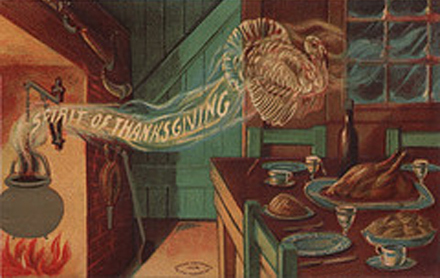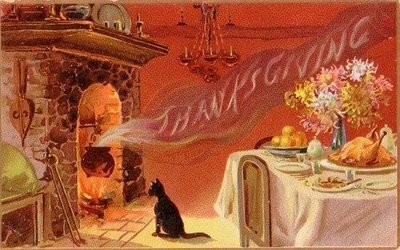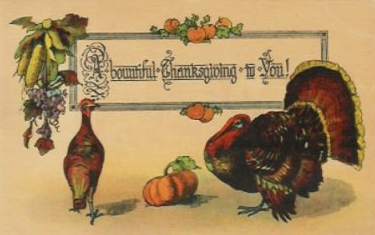
Set An Extra Plate at the Thanksgiving Table. Company May be Coming.-By Debbi Decker
Halloween has come and gone, and for many it is a time to put away the decorations, and begin thinking about the next big celebration, that of Thanksgiving. No more spooks, no more worries of black cats, hobgoblins, witches and monsters. The door to the other side has closed.
But has it really? While there are two times of the year where the other side bleeds more readily into our everyday world (Halloween and Walpurgisnacht), the fact is that spirits can visit us readily at any time of the year. Especially when it’s a big family event such as Thanksgiving.
Thanksgiving as we celebrate it today is a far cry from what it originally was. In far older times, it was a harvest festival celebrated by many cultures during all times of the year, depending on the growing season. A “last meal” was created using what was left over from the harvest, and everyone gathered to eat and share memories and stories from days past. In some regions, it was believed that the spirit of life remained in the last ear of corn harvested. Corn dollys or corn mothers were created using the husks from the last of the harvest, put in a place of honor at the table and kept until the next year’s harvest. Because so much depended upon nature, weather, and the will of the gods involved, harvest celebrations were a way to thank the forces for a good harvest, or in the case of a bad harvest, to propitiate the spirits in the hopes that they would look favorably on the next growing cycle and therefore bring about a good harvest.
Many of these celebrations were also a time to honor the ancestors. Food was given to effigies or placed on altars as a tribute to the ancestor or spirit. As western man and western civilizations grew, and different religious groups came together, other celebrations and rituals would spin off the harvest festival, giving birth to what we now know as Halloween, Day of the Dead, and All Saint’s Day, just to name a few. If you think about it, the holidays just mentioned are in reality a celebration of the dead and the harvest is simply the end or death of the growing season.
Honoring the dead is not uncommon in our culture today and Thanksgiving is another time where we can do so. Because we gather together and talk of times past, or events of the prior year, we bring an energy to the table that is easily tapped into by the spirit world. Simply telling our stories and the stories of our ancestors calls out to the dead and invites them in. How many of us have felt the presence of a long gone family member when sitting around the table and sharing memories?
So, set an extra plate that the table at this year’s Thanksgiving feast. Put a picture of a loved one on the plate and honor them by telling their stories. You never know. They might just stop in for a visit.

Debbi Decker is proprietor of twistedpixelstudio Art & Assemblage Emporium. Check out her artist page to find links to her shop and blog to read more of her writings. Visit again next month for the telling of hauntings and ghostly tales by Debbi Decker.


